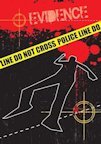If you hang around the GVP community, you quickly memorize certain numbers: 30,000, which is the number of people killed each year by guns, although the real number is a couple of thousand more; 65,000, which is the number of people who are injured when someone else shoots them with a gun but they survive; 15,000, which is the number (give or take another thousand) who injure themselves each year with a gun; 2,000, which covers the ones who kill themselves or are shot dead by the police. Put it all together and you come up with roughly 115,000 Americans who are the victims of gun violence each and every year.
 I actually think the annual number of gun violence victims is somewhere above 200,000, because as far as I am concerned, the people who aim the gun at someone other than themselves and pull the trigger are victims of gun violence too. We never think of the shooters as victims because, by definition, all of them used their gun to commit at least one crime, namely, aggravated assault or homicide with a gun. And in our fractured world, if every crime has a victim, there also has to be a perpetrator, hence by definition, the shooter can’t also be a victim. But in fact, he is.
I actually think the annual number of gun violence victims is somewhere above 200,000, because as far as I am concerned, the people who aim the gun at someone other than themselves and pull the trigger are victims of gun violence too. We never think of the shooters as victims because, by definition, all of them used their gun to commit at least one crime, namely, aggravated assault or homicide with a gun. And in our fractured world, if every crime has a victim, there also has to be a perpetrator, hence by definition, the shooter can’t also be a victim. But in fact, he is.
Why do I say that? First of all, most gun assaults are committed by people, usually young men, for whom violence, and particularly gun violence, is part and parcel of their daily lives. Want to know who comes into the ER most frequently with a gun injury? Someone who was previously arrested on suspicion of using a gun. Okay. I know, I know, the cops usually arrest the first ‘bad guy’ they find. But if you don’t think that the average street shooter isn’t going after someone who previously went after him, then you don’t know much about the streets or the shootings that take place in the streets. And when the victim of a shooting happens to be a female, the shooter is almost always some jerk of a boyfriend or husband who has previously belted her around numerous times, and maybe on occasion she defended herself by belting back.
Now we know just about everything there is to know about the victims who get shot with guns. We know their age, their race, where they live, what they were doing when the gun went off, between the CDC and the FBI there isn’t much that escapes the eye. And when we come to the shooters, even though many of them don’t get arrested, enough sooner or later wind up in detention so that we can get a pretty good idea about their demographics as well.
But here’s what we don’t know. We have absolutely no idea why someone picks up a gun, points it at someone else and – boom! – it goes off. And it doesn’t work to say that so-and-so used a gun because he came from a violent background or had a violent history, because most of the young men with that profile who want to commit a violent act do so without using a gun. According to the Department of Justice, less than 7% of all serious criminal events involve the use of guns. So how and why do the other 93% figure out how to commit violence without using a gun?
Those 7% who express anger and violence with a gun may not be victims of gun violence in a legal sense, but in terms of the impact of violence on their lives they are GVP victims just as well. Because as Konrad Lorenz points out, anger and aggression can and should be used as tools to advance the social good. But those who cannot differentiate between the positive and negative uses of aggression will sooner or later end up alienated and marginalized by the community as a whole. And most will live shorter and more painful lives.
May 11, 2024 @ 21:17:59
Dangerous road you’re going down here, but I agree.
Working on a Storycorps segment with the kid (now a grownup) who killed my son.
And got me a nice little Ruger carry gun.
Life goes on…
Quoting mikethegunguy :
> mikethegunguy posted: “If you hang around the GVP community, you quickly > memorize certain numbers: 30,000, which is the number of people killed > each year by guns, although the real number is a couple of thousand > more; 65,000, which is the number of people who are injured when s” > > >